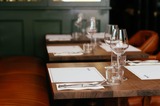
In this activity students will practice ordering food, discussing their meal, and paying for their meal.
- Subject:
- Languages
- Material Type:
- Activity/Lab
- Lesson Plan
- Author:
- The Pathways Project At Boise State
- Date Added:
- 07/26/2023

In this activity students will practice ordering food, discussing their meal, and paying for their meal.

CashOnHand - Food - Elena - English

CashOnHand - Food - Elena - Spanish

This course will explore food in modern American history as a story of industrialization and globalization. Lectures, readings, and discussions will emphasize the historical dimensions of—and debates about—slave plantations and factory farm labor; industrial processing and technologies of food preservation; the political economy and ecology of global commodity chains; the vagaries of nutritional science; food restrictions and reform movements; food surpluses and famines; cooking traditions and innovations; the emergence of restaurants, supermarkets, fast food, and slow food. The core concern of the course will be to understand the increasingly pervasive influence of the American model of food production and consumption patterns.

Students will review new vocabulary words by identifying the ingredients of a meal.

Students will discuss the differences between German and US cities, foods, fashion and more. They will also discuss differences in cultural etiquette and customs.

Students learn a bit about cities in Germany and the differences between U.S. and German cities. Students learn about German cuisine.
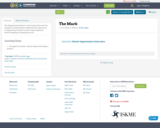
The Segmentation Game is a short interactive exercise designed to help students understand the importance of segmenting a market to select target segments before designing a hospitality service.
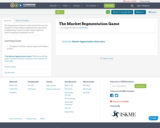
The Segmentation Game is a short interactive exercise designed to help students understand the importance of segmenting a market to select target segments before designing a hospitality service.

Students will navigate a Spanish supermarket website looking for different items in various departments. Students will also talk about foods, beverages, and restaurants. Students will express their likes and dislikes in regards to foods, beverages, and restaurants.

In this activity, students will answers questions about themselves. In addition, they will have the opportunity to share information about their hometown with the rest of the group.
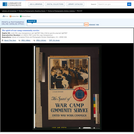
Poster showing a group of sailors socializing at table after a (Chinese?) meal. Caption: A club dinner. No. 4C.
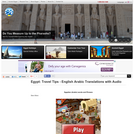
Though this website focuses on providing tours to Egypt, it offers an extensive list of words in the Egyptian dialect in both Arabic script and in transliteration. The word list includes the kinds of words you might need to know when traveling, such as "Go straight please" and "I need room service." Each word is transliterated and accompanied by an audio file. There is also an article about history of the Arabic language and the Egyptian dialect. Photo galleries on the site could be used as part of classroom instruction.
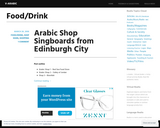
This subpage of the Virtual Arabic blog offers realia material (realia is real life material meant to be used to aid language study in classroom situations) regarding food and drink items found in different parts of the world. The items are listed on various Arabic signs and advertisements, and serve as useful examples of how food and drink material are visually and stylistically represented in the restaurant and advertisement industries.

This subpage of the Virtual Arabic blog offers realia material (realia is real life material meant to be used to aid language study in classroom situations) regarding shopping and currency. The material listed on this subpage includes pictures and videos related to Arab modes of currency, signs signifying shopping malls/outlets, and commercials designed to advertise particular products.

This resource is a video abstract of a research paper created by Research Square on behalf of its authors. It provides a synopsis that's easy to understand, and can be used to introduce the topics it covers to students, researchers, and the general public. The video's transcript is also provided in full, with a portion provided below for preview:
"Meat is one of the most carbon-heavy foods we eat. Per gram of protein, producing beef, for example, requires 20 times the land and emits 20 times the emissions as growing beans. So steering away from meat is actually a great way to fight climate change, as it vastly shrinks our carbon footprint on the planet. But do households with small carbon footprints necessarily eat less meat than those with large footprints? A new study says no. The researchers behind the study recently examined data pertaining to diet and carbon footprint across 60,000 households in Japan, whose current diet and demographics, scientists believe, could set the trend for the rest of the world. Correlating food-spending patterns with the carbon intensity needed to produce different foods revealed that meat consumption was unrelated to the size of a household’s carbon footprint. Households with small, medium, or large footprints ate nearly identical amounts of meat..."
The rest of the transcript, along with a link to the research itself, is available on the resource itself.